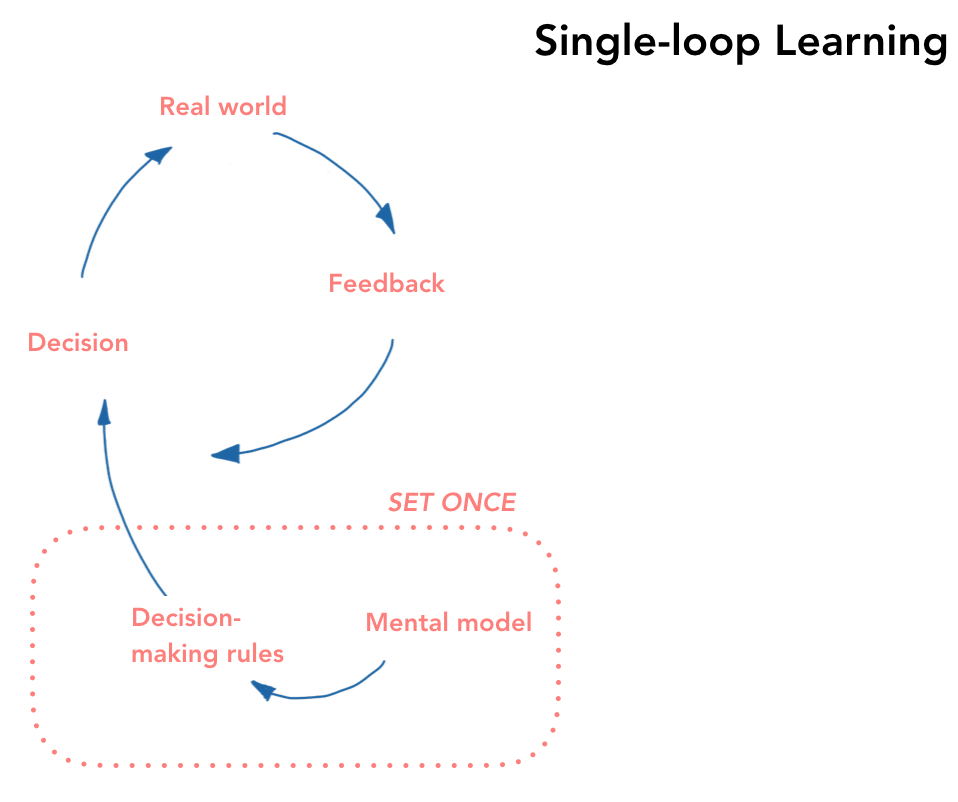Doubt and Double-loop Learning
Most of us, most of the time, interact with the world through single-loop learning.
When we meet a problem, we fall back on our experience and tackle the problem from our mental quiver of skills and knowledge. We look at a situation, identify it as ‘one of those’ problems we’ve encountered in the past and get to work. We modify our actions if there’s a gap between the expected and achieved outcomes.
If something’s not going well, we try to fix the situation.
In reality, this learning loop will be sub-optimal.
It will have baked-in assumptions that may not be grounded in reality. The problem that we thought was ‘one of those’ may be an entirely different type of problem altogether. The mental model we’ve deployed to get the job done may be wholly unsuited to the task.
Double-loop learning aims to address that gap.
Double-loop learning recognises that the way a problem is defined and solved can be a source of the problem.
Instead of trying to fix the problem, we ask are we solving the right problem. Is our approach suited to the task. Do we have the right systems in place. Double-loop learning asks us to reconsider the problem in its broader context.
But double-loop learning can be hijacked.
Especially by the over-thinking mind. Doubt is a double-edged sword in learning. Doubt in the current plan of action is what begins to the journey to unlock better approaches. But plans of action take time to evaluate.
Over-rotating on the outer loop will lead to premature, invalid feedback. Unnecessary splashing and wave-making. Sometimes it’s better to keep the head down and see how far we get.
A good coach or manager gets you to stick the course until it is appropriate to rip-up the rule-book. A bad one will leave you questioning basic truths when you should be solving the problem at hand.
— — —

